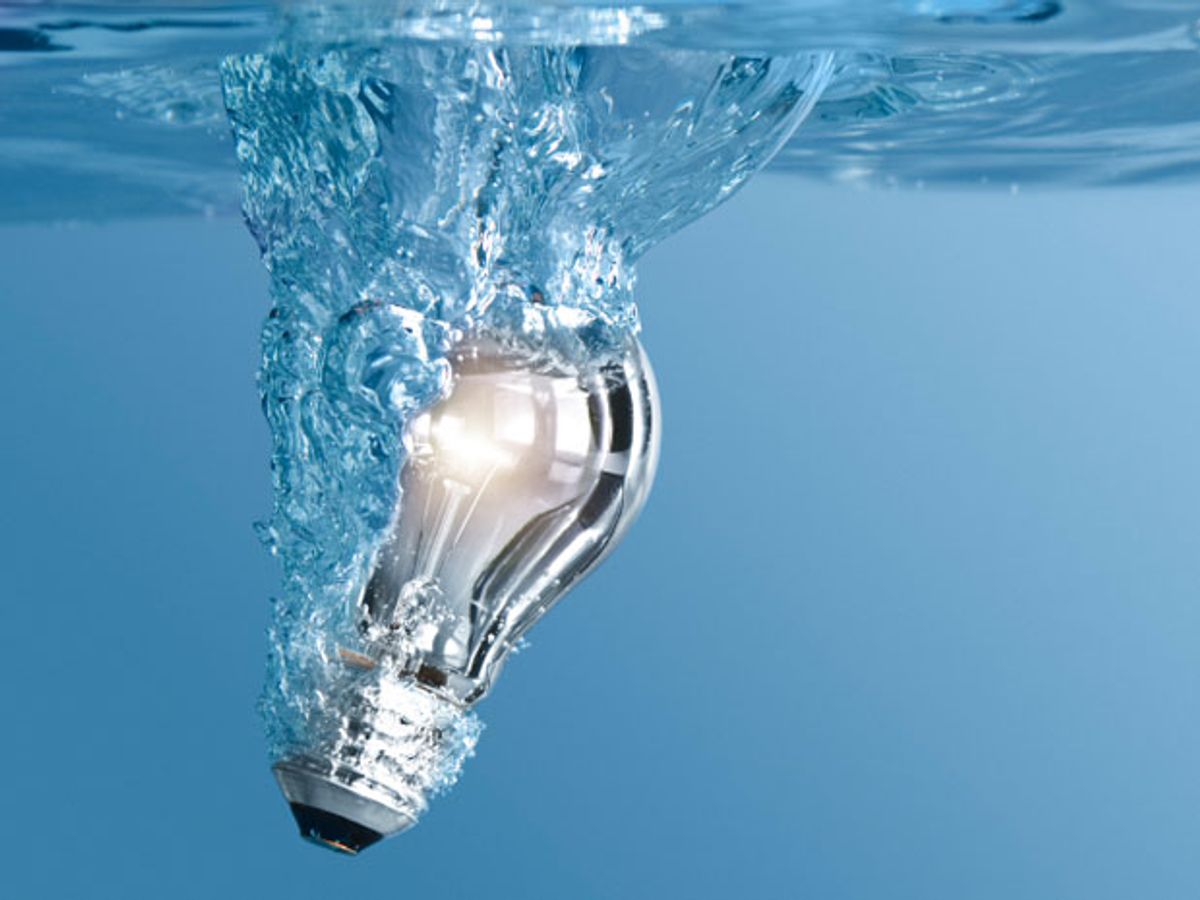When a heat wave spread across the Midwest in the summer of 2012, the Powerton coal plant in central Illinois had to temporarily shut down a generator when its water supply became too warm to effectively cool the plant.
Although 2012 was a year of severe drought in the U.S., the problems seen at various coal, nuclear, and hydropower facilities last summer are only likely to increase in coming years unless the power sector quickly changes its way of doing business, according to a new study from the Union of Concerned Scientists (UCS) [PDF]. The problem is that the power sector is not known for moving quickly.
Power generation in the United States relies heavily on water. For some plants, like the ones that run on coal or nuclear power, the water is needed for cooling, while hydro directly uses water for energy production. More than 40 percent of fresh water used in the United States is withdrawn to cool power plants. Renewable energy generally uses far less water, but there are glaring exceptions, such as geothermal and concentrating solar.
The report, part of UCS’s Energy and Water in a Warming World Initiative, noted that even though the oldest and most water-hungry, coal-fired power plants are being retired, the shift to cleaner energy isn’t happening fast enough to overcome increasing water shortages.
“We set electricity and water on a collision course years ago. Now we must build a power system hard-wired not for risk, but for resilience,” Peter Frumhoff, UCS's director of science and policy and chair of the project’s Scientific Advisory Committee, said in a statement.
The report found that although coal use would drop significantly through 2050, the change would not significantly reduce the power sector’s carbon emissions because demand would rise and natural gas would mostly replace coal. Other estimates find coal use dropping more quickly. With the looming mercury and air toxic standards (MATS) rule from the U.S. Environmental Protection Agency, Black &Veatch recently estimated that nearly 60 gigawatts of coal generation will retire by 2020.
As coal use plummets, there could be serious water savings under a business-as-usual scenario, because most new power plants would use recirculated or dry cooling and gas-fired power plants require less cooling. The study estimates freshwater withdrawals could drop more than 80 percent by 2050 and water consumption would go down by more than 40 percent. The savings would not be same across the country, however, and water use for power could even rise in some areas, such as the Great Lakes region.
There also could be even further complications. Even though gas-fired power plants use less water than coal or nuclear, the process of extracting gas by hydrofracking requires far more water than conventional drilling.
Also, even though some newer plants might use far less water, they could find that there’s far less water available as water temperatures go up and water flows go down. Another study found that nearly half of 423 U.S. plants were at risk of lower power output during droughts because their intake pipes for water were less than 3 meters below the surface.
Although the business-as-usual scenario could be bleak, there is another way forward, according to the report. A mix of energy efficiency and renewable energy could vastly reduce the amount of water needed to keep the lights on.
First, the UCS sees energy efficiency offsetting what would otherwise be increased levels of energy use. That is already happening, with electricity use levels nearly flatlining from 1978 to 2005.
The second part of the scenario, with renewables producing 80 percent of energy demand, is a tough target. If the aggressive renewable target could be achieved (California and Hawaii have the most aggressive renewable portfolio standards in the country, at 33 and 40 percent, respectively), water consumption would drop by 85 percent and water withdrawals would be 97 percent lower.
The study argues that the renewables-and-efficiency scenario would free up water for the agricultural sector, which is already fighting with power projects for the right to constrained water resources.
Although 80 percent renewable energy is a stretch across most of the United States at this time, the study notes several ways that we can get closer to the renewables-and-efficiency scenario, rather than business as usual. Plants could use non-potable wastewater instead of freshwater for cooling and states can strengthen energy efficiency resource standards and renewable energy portfolio standards.
Of course, the water industry also uses a significant amount of energy and more efficient wastewater treatment plants and more efficiency in municipal water systems will also be critical in coming years.
“We can untangle the production of electricity from our water supply to a much greater degree, and we can build a low-carbon electricity system,” study authors wrote. “But we cannot wait, nor do either in isolation, without compromising both. We must get this right.”
Photo: iStockphoto





